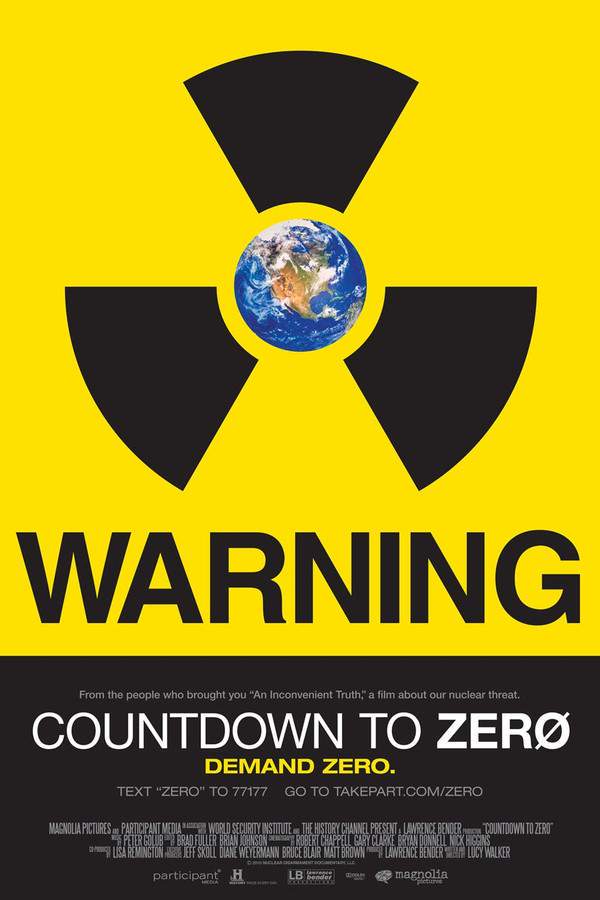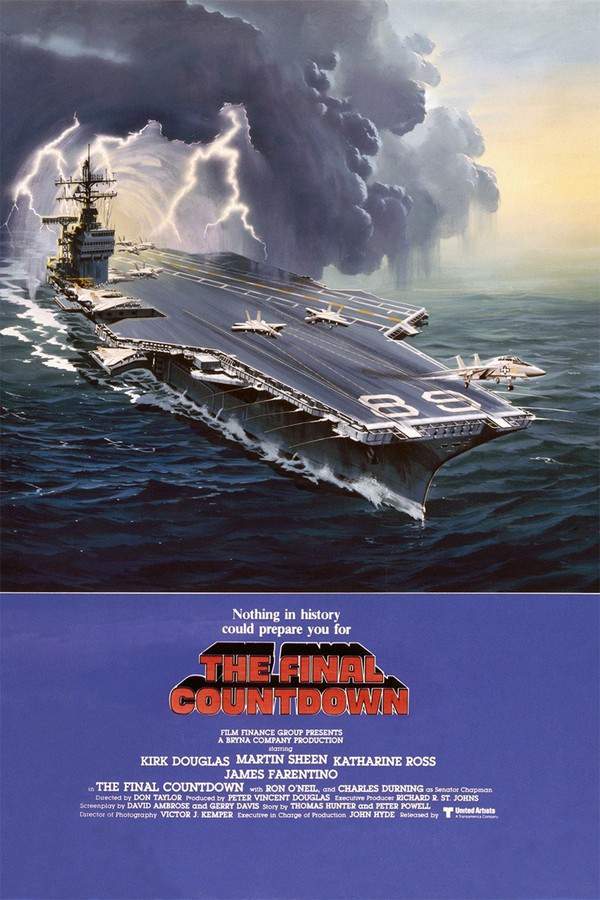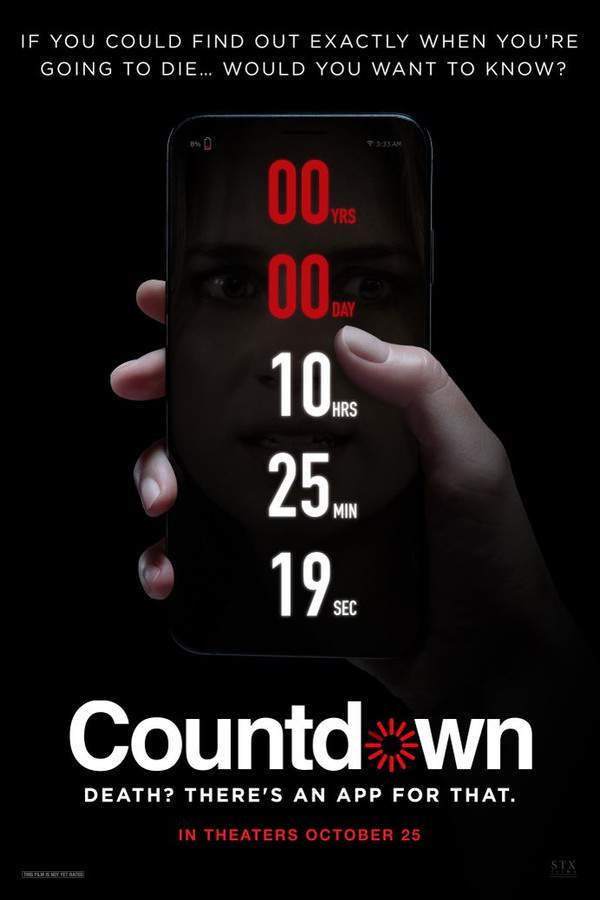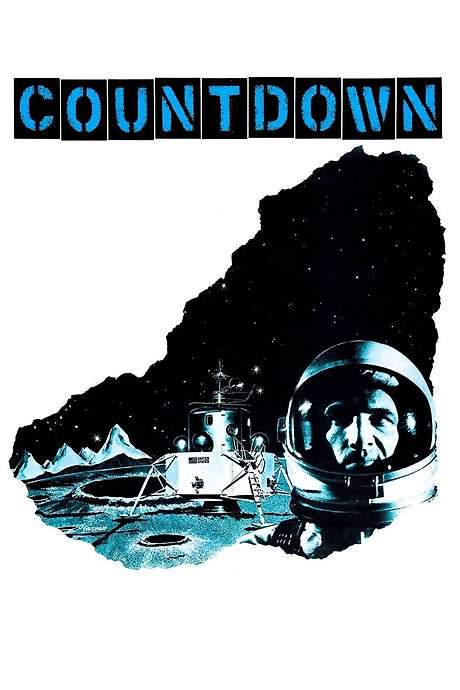
Countdown to Looking Glass
Year: 1984
Runtime: 90 mins
Language: English
Director: Fred Barzyk
Set against the strategic Strait of Hormuz, the film imagines a tense standoff between the United States and the Soviet Union, the gateway to the Persian Gulf. It unfolds through a continuous news broadcast, chronicling the escalating crisis that culminates in the first exchange of nuclear weapons.
Warning: spoilers below!
Haven’t seen Countdown to Looking Glass yet? This summary contains major spoilers. Bookmark the page, watch the movie, and come back for the full breakdown. If you're ready, scroll on and relive the story!
Countdown to Looking Glass (1984) – Full Plot Summary & Ending Explained
Read the complete plot breakdown of Countdown to Looking Glass (1984), including all key story events, major twists, and the ending explained in detail. Discover what really happened—and what it all means.
The CVN news network’s nightly program unfolds under the steady voice of Don Tobin, while reports from the field come in from Michael Boyle and Dorian Waldorf. The opening story centers on a terrorist bombing at the American embassy in Saudi Arabia that claims the life of an American ambassador, setting off a chain of global tensions. In the days leading up to this event, a worldwide banking crisis—brought on by loans defaulted by several South American nations—stirs instability across Southwest Asia. Before the unrest reaches Saudi soil, Soviet-backed militants seize control in Oman as the Omani economy falters. A subsequent update reveals that the banking crisis may begin to ease, suggesting a possible shift in the pressure cooker of world affairs.
Within this volatile landscape, Waldorf’s Pentagon insider boyfriend offers off-the-record perspectives on how the White House is handling these intersecting crises, hinting at information overload in the upper echelons of power. Tobin, though, urges caution, insisting that Waldorf verify multiple sources before broadcasting a breaking story.
By day two, a large-scale American peacekeeping operation is announced in Saudi Arabia, deploying troops, ships, and aircraft at King Fahd’s request. The move draws sharp criticism both at home and abroad, and many traditional allies, including the United Kingdom, decline to participate. American officials defend the mission as a necessary show of resolve, arguing that past Allied successes in containing Soviet provocation demonstrate what they can achieve on their own.
Day four sharpens the crisis as Soviet-backed Oman retaliates by imposing a hefty toll—$10,000 for every oil tanker passing through the Strait of Hormuz—threatening to halt oil traffic through the Persian Gulf unless U.S. forces withdraw. The tanker captains balk at paying, effectively triggering an economic blockade that halts oil shipments and deepens global anxiety.
On day five, a breaking-news alert documents a brief aerial clash: American warplanes engage unidentified enemy fighters, possibly from Iran or Kuwait, and an American AWACS aircraft is shot down. Two of the five attacking planes are downed in retaliation, with the attackers targeting Ras Tanura in response to Saudi Arabia’s request for American troops.
Waldorf brings a potential scoop supported by satellite imagery that suggests Soviet forces have pulled back from their border with Iran, signaling a possible mutual withdrawal—but Tobin remains wary, insisting that Waldorf secure more than one source before any definitive report airs. The tension between signals and noise becomes a running concern as officials try to keep pace with events.
Day six sees the deployment of the USS Nimitz and its battle group to the Persian Gulf to secure freedom of passage for oil tankers, while the President activates the Selective Service, drafting thousands of Americans in anticipation of a broader confrontation. The Soviets respond by deploying submarines to the same area, and Boyle is sent to cover the new naval deployment.
By day eight, CVN expands its coverage to 24 hours, and the United States begins shutting down its nuclear power plants nationwide. A state briefing is followed by the sobering news of the Defense Secretary’s death, a possible consequence of the mounting stress of crisis management.
Day nine intensifies as a Omani gunboat attacks and appears to disable an unarmed Dutch vessel attempting to pass through the Strait of Hormuz, while Soviet attack submarines lurk nearby. Evacuations begin in earnest: overseas air travel is paused, schools close, and the Strategic Air Command redeploys B-52 bombers—an escalation not seen since the Cuban Missile Crisis. Citizens are urged to stay off their phones as chaos unfolds. As the White House is evacuated, Waldorf is offered a chance to leave with her partner, but she chooses to stay and continue reporting.
A night clash between Omani gunboats and the U.S. Navy erupts in the Strait of Hormuz. An Omani gunboat fires on and disables a warship before being destroyed by American forces. Amid the escalating tension, Tobin discusses the crisis with correspondent Eric Sevareid, offering a cautious takeaway: > reasonable people, once they’ve looked the Devil in the face, aren’t going to shake hands with him.
Soon after, a Soviet submarine slips through the perimeter of American defenses and moves toward the Nimitz. Depth charges fail to halt it, and a powerful underwater explosion signals that a nuclear depth bomb may have taken it out. Boyle evacuates to the carrier’s island to press for answers about who authorized the nuclear action, but a clear explanation remains elusive. A subsequent nuclear detonation within the battle group delivers a devastating blow, and atmospheric radiation disrupts communications as the carrier loses contact with CVN.
With the White House evacuated to the National Emergency Airborne Command Post, the Emergency Broadcast System is activated. As the situation spirals, Tobin reflects on the grim reality of the moment, recalling a late colleague who believed that a nuclear exchange would eventually force both powers to choose peace over war.
The film closes with the takeoff of an aircraft from Andrews Air Force Base, signaling the likely departure of the president’s airborne command post, or Looking Glass, as CVN’s broadcast abruptly ends. The fate of the world hangs in a fragile balance, leaving viewers with a haunting sense of uncertainty about the future of Earth and humanity.
Last Updated: October 09, 2025 at 14:41
Unlock the Full Story of Countdown to Looking Glass
Don't stop at just watching — explore Countdown to Looking Glass in full detail. From the complete plot summary and scene-by-scene timeline to character breakdowns, thematic analysis, and a deep dive into the ending — every page helps you truly understand what Countdown to Looking Glass is all about. Plus, discover what's next after the movie.
Countdown to Looking Glass Timeline
Track the full timeline of Countdown to Looking Glass with every major event arranged chronologically. Perfect for decoding non-linear storytelling, flashbacks, or parallel narratives with a clear scene-by-scene breakdown.

Similar Movies to Countdown to Looking Glass
Discover movies like Countdown to Looking Glass that share similar genres, themes, and storytelling elements. Whether you’re drawn to the atmosphere, character arcs, or plot structure, these curated recommendations will help you explore more films you’ll love.
Explore More About Movie Countdown to Looking Glass
Countdown to Looking Glass (1984) Scene-by-Scene Movie Timeline
Countdown to Looking Glass (1984) Movie Characters, Themes & Settings
Countdown to Looking Glass (1984) Spoiler-Free Summary & Key Flow
Movies Like Countdown to Looking Glass – Similar Titles You’ll Enjoy
Countdown to Zero (2010) Spoiler-Packed Plot Recap
The Final Countdown (1980) Detailed Story Recap
Countdown (2019) Film Overview & Timeline
Shockwave: Countdown to Disaster (2017) Movie Recap & Themes
Fail Safe (2000) Spoiler-Packed Plot Recap
End Day (2005) Plot Summary & Ending Explained
By Dawn’s Early Light (1990) Full Summary & Key Details
The Day After (1983) Film Overview & Timeline
Special Bulletin (1983) Story Summary & Characters
Countdown to War (1989) Story Summary & Characters
The Looking Glass War (1970) Story Summary & Characters
Countdown (1967) Spoiler-Packed Plot Recap
Countdown (1996) Spoiler-Packed Plot Recap
Countdown: Armageddon (2009) Spoiler-Packed Plot Recap
Countdown: The Sky’s on Fire (1999) Story Summary & Characters

















